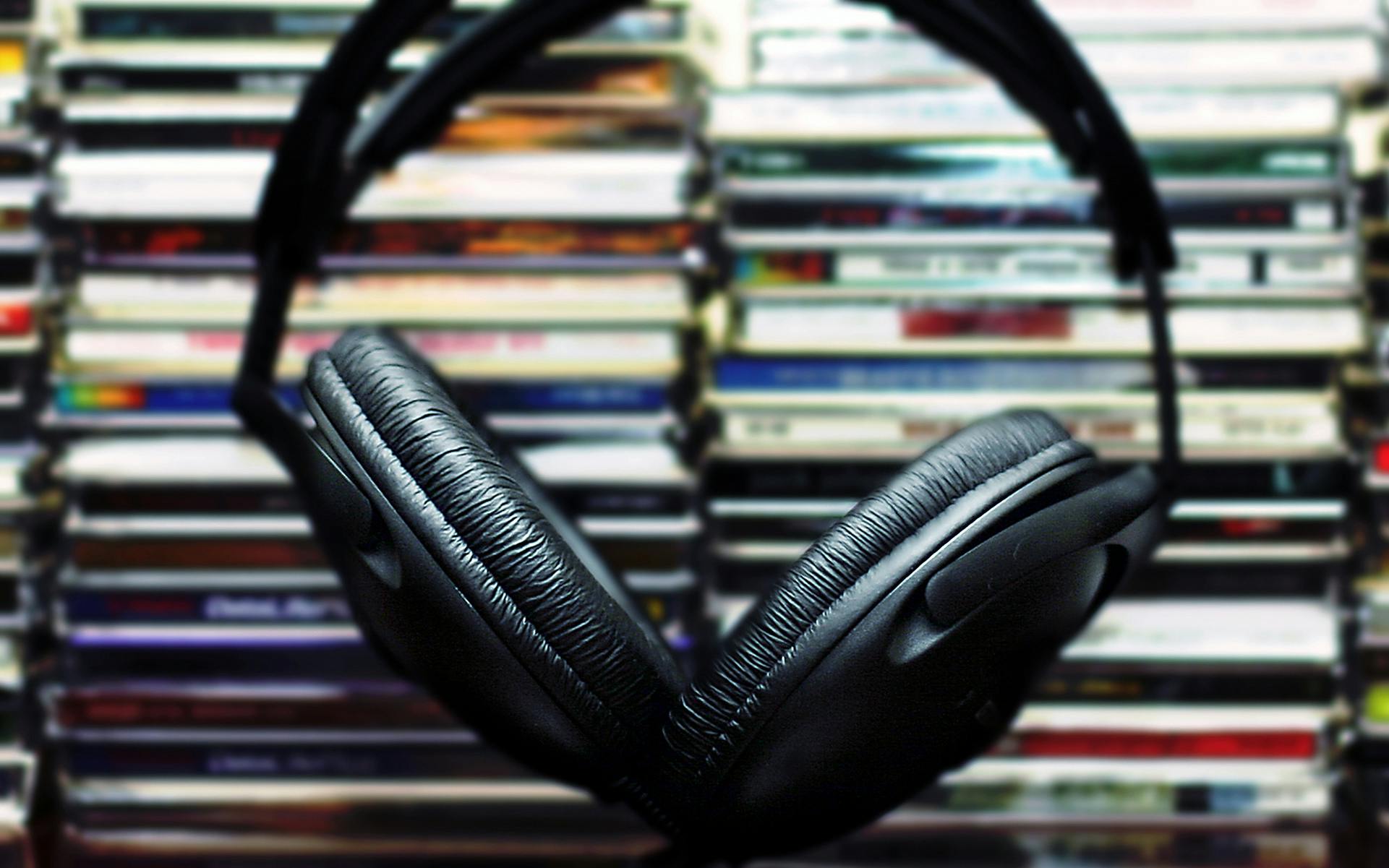You close your eyes and take a breath from your vaporizer as the music begins to play. You’ve listened to this album on numerous occasions, but this time the individual notes, rhythms, and melodies seem to resonate with a particular richness, intensity, and gravitas that together arouse your senses on a whole new level.
As Lindsey Buckingham of Fleetwood Mac once said, “If you’ve been working on something for a few hours and you smoke a joint, it’s like hearing it again for the first time.” The connection between music and cannabis has a rich history, dating back to the emergence of jazz in the early 20th century. Many pioneers in this improvisational art form were regular users of cannabis, including Louis Armstrong and Dizzy Gillespie.
But why does music sound sogood when you’re high?
While scientific research investigating this topic is rare, there are several hypotheses that attempt to explain the pleasurable duet that is cannabis and music.
How cannabis can aid music production
Some theorists postulate that cannabis’ effects on an individual’s sense of timing might be responsible for its appeal amongst musicians. Previous studies have shown that cannabis speeds up our internal clocks, making external “real world” time appear to pass slower. For example, one study demonstrated that a 15 second time interval was “expanded” to an average of 16.7 seconds while under the influence of cannabis (while sober controls correctly estimated this interval).
One study demonstrated that a 15 second time interval was “expanded” to an average of 16.7 seconds while under the influence of cannabis.
“If you look into the literature on timing, it seems to be that the brain systems that are influenced by cannabinoids are producing a state of mind in which there seems to be a slower backward counting,” says Jorg Fachner, professor of music, health, and the brain at Anglia Ruskin University in the United Kingdom. “And that means your timing units, the time frames that you are overseeing, seem to be enlarged. So those who are improvising seem to have a bit more time to foresee the melodic developments in improvisation and to fine grain the rhythmic patterns.”
Indeed, some anecdotal reports suggest that this subjective expansion of time benefits an improvisational art form like jazz because musicians are able to mentally squeeze more notes in a given number of musical bars. These claims, however, have yet to be substantiated by empirical studies.
Why cannabis makes music sound better
How does this change in timing affect listeners consuming cannabis?
Focus and attention
According to individual user reports, modifications in internal time can alter our attentional spotlight, facilitating changes in auditory perception.
“When your time perception changes, your focus of attention changes,” says Fachner. “So when you put on a stereo headset you might have an enhanced ability to select certain information and disregard other information, which could help distinguish the individual sounds a bit more intensively.”
Shop highly rated dispensaries near you
Showing you dispensaries nearAccording to Fachner, this enhanced attentional focus to see “the space between the notes” results in music that is perceived to be “much more lively, much more clean, and much more distinct.”
These anecdotal changes in perception have also been shown to have possible neurological underpinnings.
In 2002, Fachner conducted a study investigating the link between cannabis usage, music perception, and changes in brainwave activity. Using an electroencephalogram (EEG), a device capable of detecting small changes in electrical activity throughout the brain, Fachner first measured the subject’s brainwave activity while sober (both with and without the presence of music).
In order to reduce biases in behavior that could arise from an artificial laboratory setting, the experiments were conducted in the comfort of a living room. The selected music consisted of three songs that included ensemble chamber music, folk-punk, and a Beatles cover. After a 30-minute rest period, participants then smoked cannabis containing 20mg of THC and listened to same music while their brainwave activity was recorded.
The results indicated that music-listening cannabis users experienced changes in parietal, right temporal and left occipital cortices—brain areas that have previously been associated with attentional strategy, auditory processing, and spatial processing, respectively.
More specifically, the parietal (attentional strategy) cortex showed stronger activity in a particular frequency range called alpha. Interestingly, previous EEG studies have shown that students who are gifted in mathematics also display similar increases in alpha patterns in this brain region while solving problems, indicating that this activity pattern might be indicative of more efficient information processing than the average person.
“One of the interpretations that I had from this data is that when it comes to attention, subjects were focusing a bit more on the sound, and that this attention also required less mental energy,” says Fachner. “So it’s easier to listen, to focus, and to relax.”
In addition, increased activity in the right temporal brain region was also observed in stoned music-listening subjects. Because this area is primarily responsible for processing auditory information, these findings further demonstrate that a change in neural processing strategy could underlie altered music perception.
Visual processing
Fachner also observed cannabis-induced changes in the left occipital area, a region in the back of the brain that normally processes visual information.
“When you listen to music, it always has a spatial dimension to it,” he says. “We need to know where the sound objects are coming from—that is evolutionarily important. And of course the visual centers process this.”
Changes in this visual processing might be connected with individual reports of synesthesia, or the blending of different sensory systems, while intoxicated. For instance, “there are people that say they have enhanced visual imagery to the music” after smoking, says Fachner.
While high on cannabis, “you tend to shift your attention more rapidly if it is an interesting-sounding piece of music.”
Yet, it is important to note that this EEG study only tested four subjects, each of which might have different perceptual strategies for listening to music and varying tolerances to cannabis. Thus, the results lack sufficient statistical reliability to make wide-reaching claims about the intermingling of cannabis and music on a neurological level.
Other studies from the 1970s have also suggested that that stoned individuals have enhanced auditory intensity (i.e. loudness) perception, an increased tendency of “hearing” hallucinated sounds, as well as dose-related preferences for higher frequency sounds.
Memory
Fachner also proposes an alternative explanation for cannabis-induced changes in music perception that involves disruptions in memory processing. While high on cannabis, “you tend to shift your attention more rapidly if it is an interesting-sounding piece of music,” he says.
Because you are rapidly shifting attention and assimilating more information than you have the capacity to retain, you end up “emptying” your short-term memory more often. As a result of this “compressed” memory, the listener is thought to be more present, more in-the-moment with the music, and can cultivate a greater focus on each individual sound.
Stated differently, “A subject becomes less able to integrate past, present and future, his awareness becomes more concentrated on present events; these instances, in turn, are experienced as prolonged or timeless when they appear isolated from the continual progression of time,” wrote Frederick Melges, a psychiatrist at Stanford University.
In summary, “we have a different acoustic space that we perceive, a different time scale for the auditory events, and a different attention strategy for focusing on what is happening in the music,” says Fachner. “And all that seems to be connected to what is happening at the onset of cannabis activity.”
Future research and application
The auditory enhancing effects of cannabis might also have potentially therapeutic applications. Fachner notes that based on his results and anecdotal evidence, cannabis could help those with hearing impairments fine tune their listening ability, more effectively differentiate the source of sounds, and hear higher frequency sounds more clearly.
“You have a different perception of the acoustic space, and the higher frequencies give you more information about where the sound source is in the room,” says Fachner.
Yet, scientists continue to face many barriers in their ability to test this and many of the other hypotheses put forth surrounding cannabis and auditory processing. Despite the decriminalization of cannabis in many states across the country, it is still difficult for scientific studies involving controlled substances to clear scientific review boards.
But despite these setbacks to the scientific understanding of cannabis’ transcendent effects on the musical experience, most users tend to agree that this partnership shows no signs of slowing down.







